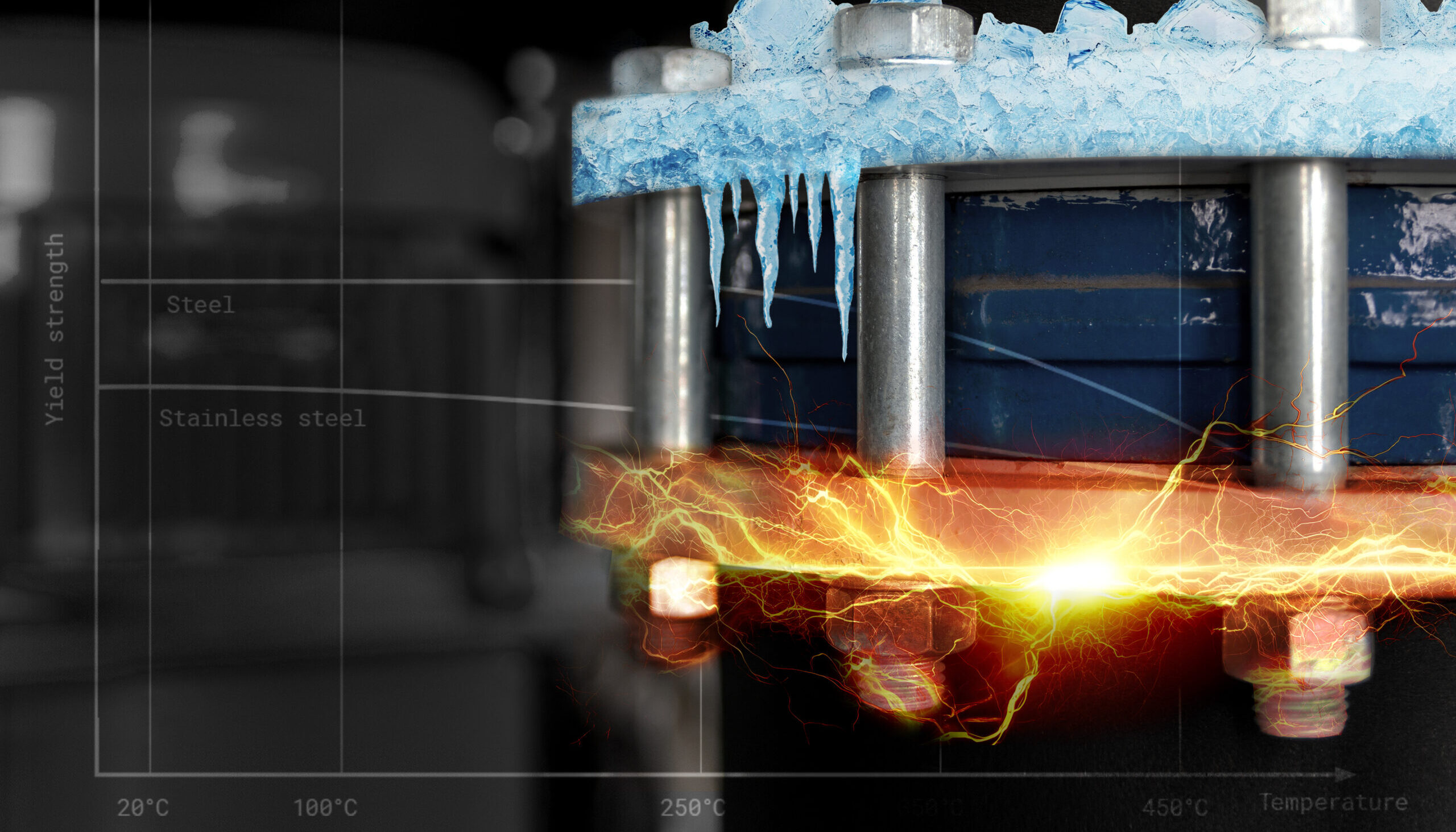
Reliable calculation of temperature-dependent bolt forces
Why thermal influences are often underestimated in bolted joints - and how you can reliably take them into account
Introduction
In many technical applications, bolted connections are not only subject to mechanical stress, but are also exposed to temperature fluctuations - for example in engines, industrial plants or high-temperature environments. What many people underestimate: Temperature changes can significantly alter the preload force of a screw - in the worst case to such an extent that the connection fails.
In this article, you will learn how temperature influences the forces in a bolted joint, what you need to pay attention to in the design and how to minimize risks.
Why is temperature critical for bolted joints?
1. different material expansion
Screws and the connected components (e.g. flanges, covers, housings) are often made of different materials - such as steel and aluminum. These materials expand to different degrees when the temperature changes. This can cause the screw to "shorten" or the clamping part to "lengthen" in the flow of force.
2. changing the preload force
The preload force - i.e. the force with which a screw presses its components together - can change significantly as a result of temperature changes. The linear coefficient of thermal expansion (α) of the materials used is decisive.
-
αₛ > αₚ → Preload force decreases
-
αₛ < αₚ → Vorspannkraft steigt
- If both are identical or the temperature is homogeneous, Fₓ remains almost constant.
As the temperature increases, the modulus of elasticity and the yield strength also decrease - the screw becomes "softer" and can stretch more easily.
Practical example (simplified explanation)
Imagine a steel screw that connects two components. When heated, the bolt expands more than the component. This causes the connection to relax and the original preload force decreases. As a result, the connection can loosen - in the worst case, causing damage to the component or system failure.
What must be taken into account in the calculation?
The following points should be included in the design to ensure that bolted connections function reliably even in the event of temperature fluctuations:
- Materials and their thermal expansion
Different materials expand to different degrees. - Geometry of the connection
In particular, the length proportions of the screw and the clamping parts in the force flow. - Temperature range and operating status
What temperature change is to be expected - e.g. from installation at room temperature to operation at 100 °C or more? - Elastic behavior of the screw
How much can it compensate for the change in length without stretching or compressing excessively?
Recommendations for practice
- Choosing materials consciously
If possible, use materials with similar thermal expansion in order to keep relative movements to a minimum. - Document installation temperature
The difference between the installation and operating temperature is decisive for the subsequent clamping force. - Consider temperature in the calculation
Modern calculation software such as MDESIGN bolt can automatically detect temperature-related changes - both for loss of clamping force and for possible overload. - Check critical connections separately
In safety-critical applications (e.g. pressure vessels, motors, drives), you should design and document thermal effects with particular care.
Conclusion
Temperature-dependent changes in preload force are an often underestimated but technically highly relevant factor in bolted connections. They can lead to loosening, leaks or even failure of the connection. However, these risks can be safely controlled through careful design, material selection and the use of suitable software.